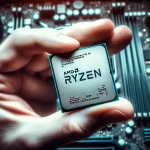Technological evolution in satellite services is doing more than just transforming telecommunications. It has caught the attention of key industry analysts who recognize and reward innovation. Today, satellite communication is a critical element not only for continuous global connectivity but also for expanding the boundaries of Internet of Things (IoT) implementations. With new standards emerging, satellite operators are finding new ways to meet IoT users’ demands with innovative solutions.
Major developments by satellite operators have been a recurring topic of discussion, with companies constantly seeking to enhance their IoT offerings. The focus recently has been on enhancing connectivity beyond terrestrial limitations. Historical reports have often highlighted the ongoing challenges in achieving seamless integration; however, the scenario is changing as satellite providers bring forward more advanced and cost-effective IoT solutions. Evaluations of sector players consistently underscore the importance of multi-mode capabilities and comprehensive network offerings as central elements in progress.
How Are Operators Expanding IoT Services?
Operators like Globalstar are focusing on affordable IoT services, evolving from their expertise in low-cost communication. The introduction of their two-way messaging service alongside LTE and 5G capabilities reflects a strategic move to offer complete connectivity solutions. In parallel, Iridium’s advancements in multi-mode IoT services, such as their 3GPP NTN rollout, similarly signify a shift toward comprehensive IoT connectivity, competing with new entrants like Sateliot and OQ Technology.
What Role Do Standards Play in Market Growth?
Sticking to established standards such as LoRa NTN is integral for operators like EchoStar Mobile and Lacuna Space. These standards simplify integration due to their alignment with IoT constraints concerning cost and power. EchoStar Mobile emphasizes pan-European connectivity, while Lacuna Space looks to expand its reach, both utilizing LoRa NTN, indicative of its importance in supporting IoT applications seamlessly.
What Could Impact Market Dynamics?
Competition and collaborations within the industry are intensifying. Notable entities like Starlink, with their vast satellite network, project IoT service launches in the near future. Starlink’s formidable presence could be challenged by Amazon’s Project Kuiper, aiming to serve varied customer needs through its own satellite infrastructure. Musk versus Bezos could shape future market dynamics, defining the next phase of satellite IoT evolution.
The satellite IoT landscape is in a state of flux as operators adjust to new technologies and standards. An operator’s success increasingly depends on factors such as constellation size, orbital choices, and optimization of protocols to meet specific needs. Satellite operators are expected to continue innovating and forming partnerships that enhance service delivery to ever-diversifying IoT markets, emphasizing the need for a customer-centric approach in technical and strategic decisions.










